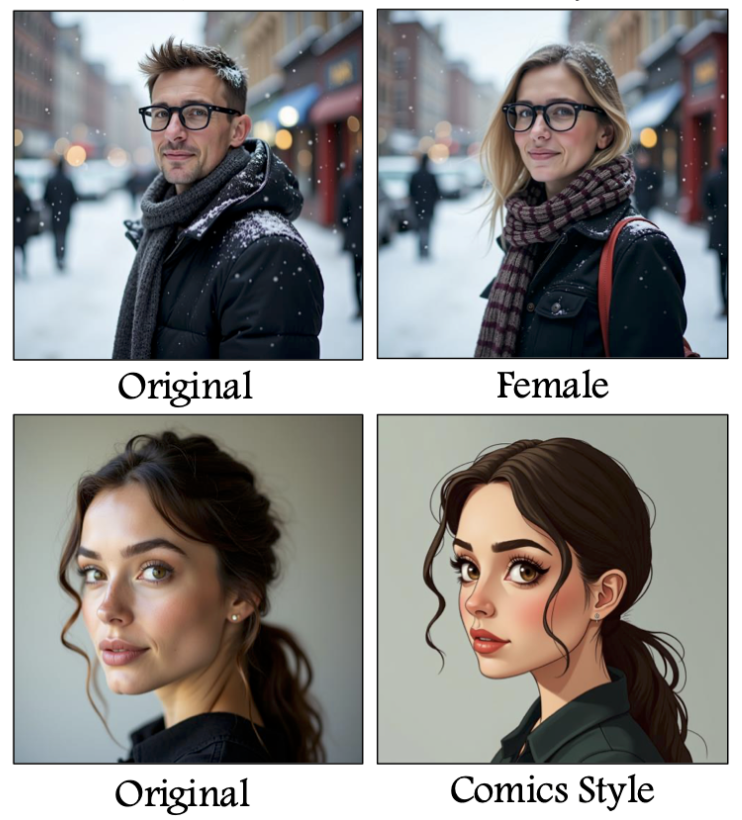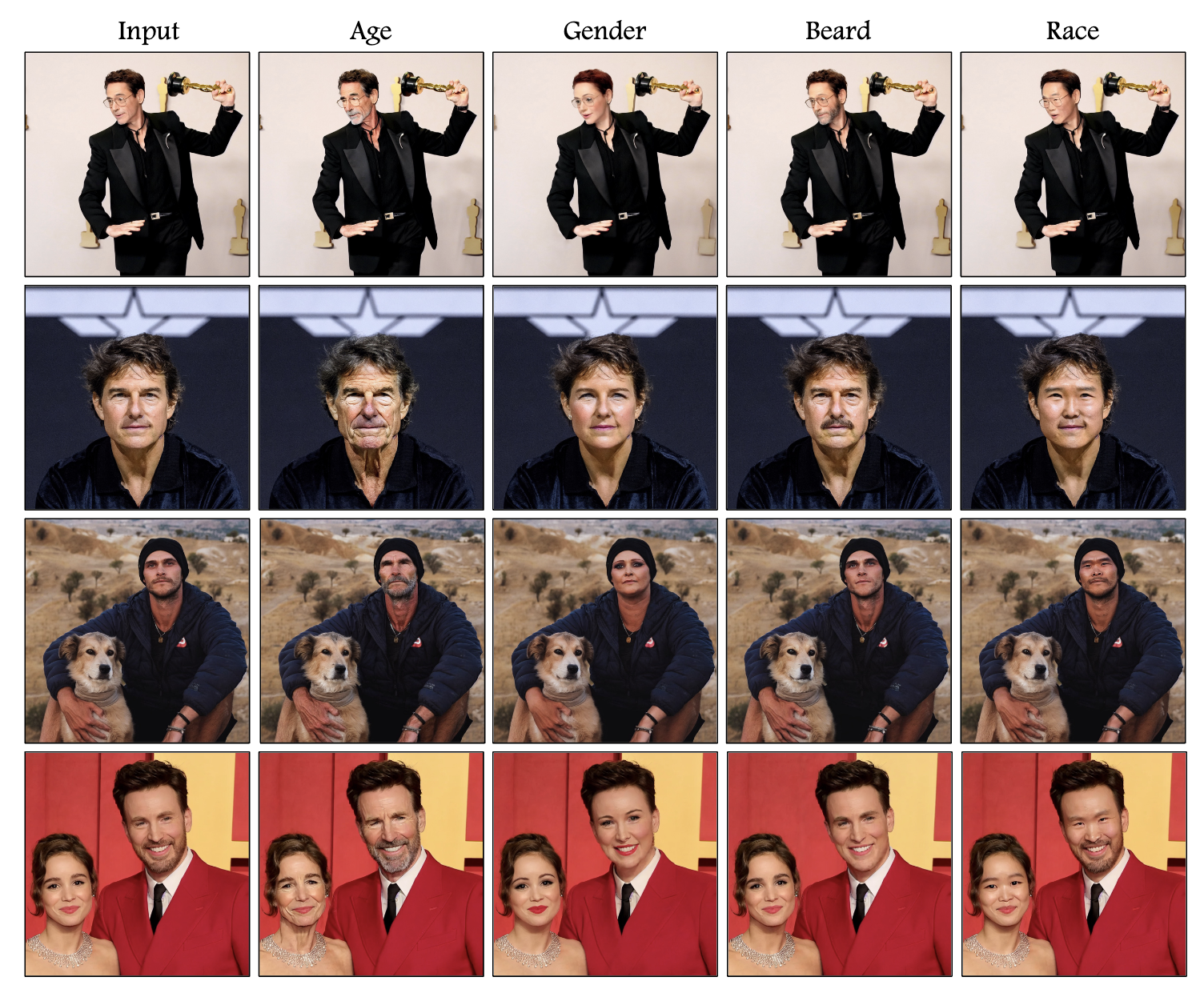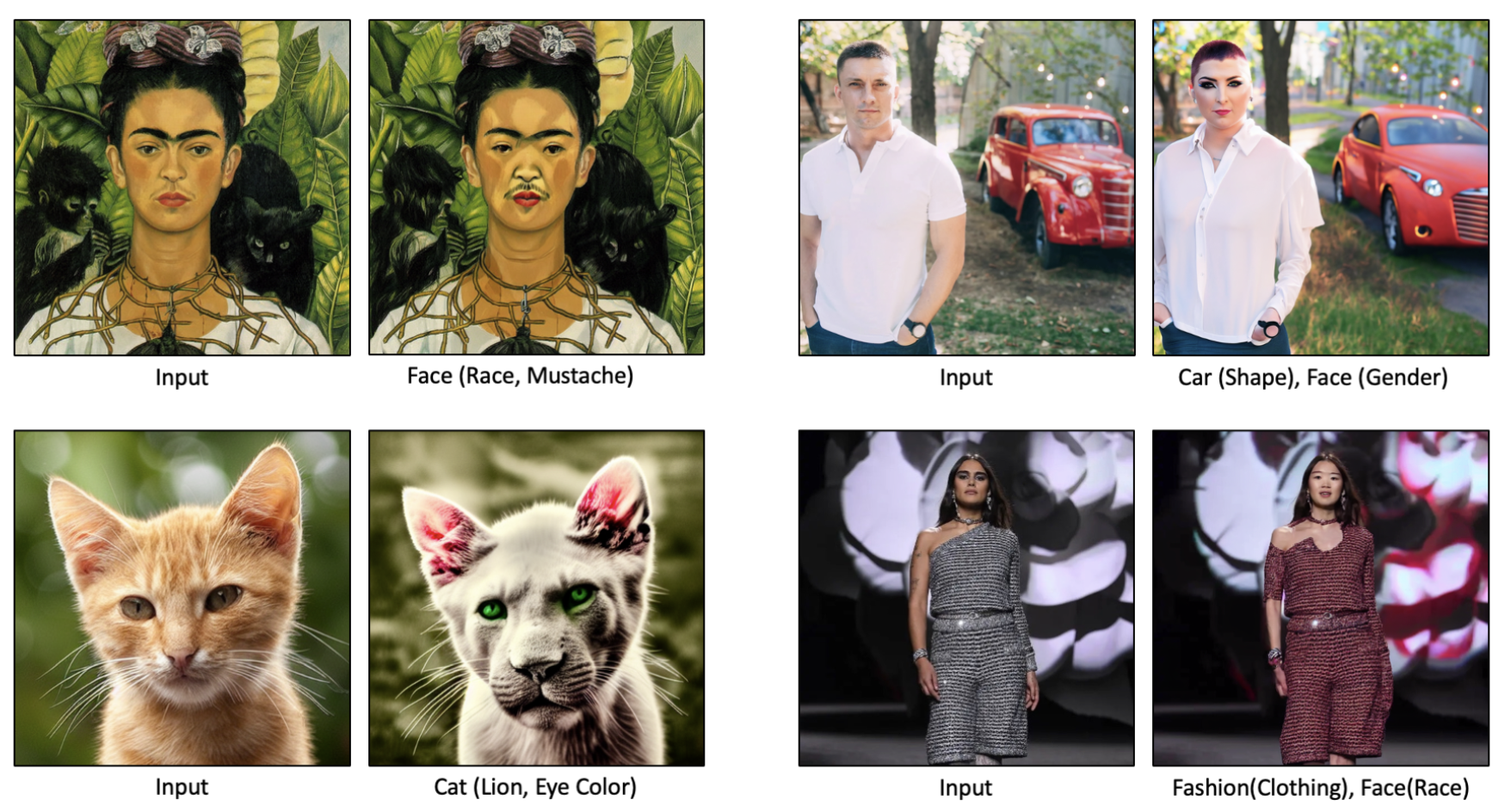About Me
I am a Ph.D. student at Virginia Tech, Blacksburg, where I am affiliated with Sanghani Center for Artificial Intelligence and Data Analytics. I am working on making generative models more controllable and customizable to further enhance control over them. Before joining Virginia Tech, I obtained my M.Sc. & B.Sc. degree from Deprtament of Computer Engineering at Bilkent University (M.Sc. Thesis).
At Virginia Tech, I am currently working on the controllability aspect of generative models under the supervison of Pinar Yanardag. In the past, I have been fortunate to work with Aysegul Dundar at Bilkent University, and Yijun Li at Adobe Research.
Research Interests
- Text-to-image generation and editing
- Customization of generative modesls
- Representations learned by generative models
Recent Research

FluxSpace: Disentangled Semantic Editing in Rectified Flow Transformers
Yusuf Dalva, Kavana Venkatesh, Pinar Yanardag
CVPR 2025

GANTASTIC: GAN-based Transfer of Interpretable Directions for Disentangled Image Editing in Text-to-Image Diffusion Models
Yusuf Dalva, Hidir Yesiltepe, Pinar Yanardag
arXiv, 2024

NoiseCLR: A Contrastive Learning Approach for Unsupervised Discovery of Interpretable Directions in Diffusion Models
Yusuf Dalva, Pinar Yanardag
CVPR 2024 (Oral - top 0.8%)
For the full list of publications, visit the Publications Page and my Google Scholar profile.
News & Updates
February 2025: FluxSpace got accepted to CVPR 2025!
December 2024: FluxSpace and Context Canvas now available at arXiv.
May 2024: Joined Adobe Research as a Research Scientist Intern.
May 2024: GANTASTIC now available at arXiv.
February 2024: NoiseCLR got accepted to CVPR 2024 for an oral presentation.
September 2023: "Image-to-Image Translation For Face Attribute Editing With Disentangled Latent Directions" won Best Master Thesis Award from IEEE CS Turkey Chapter.
August 2023: Started my Ph.D. at Virginia Tech.
